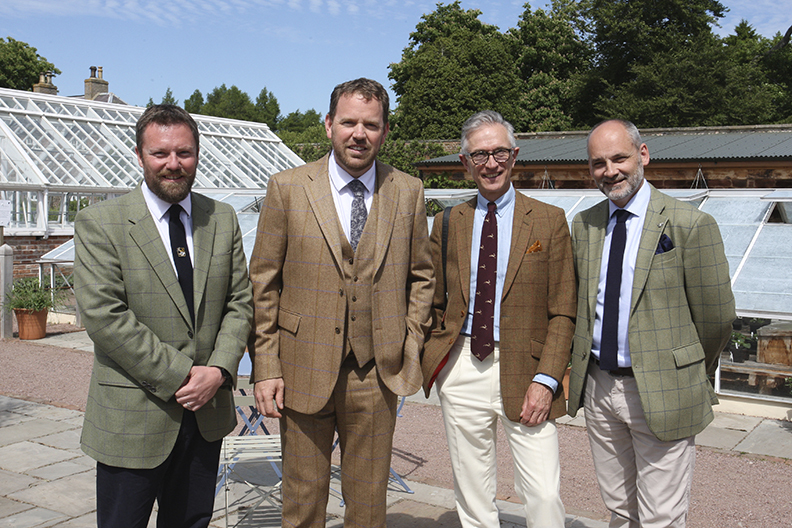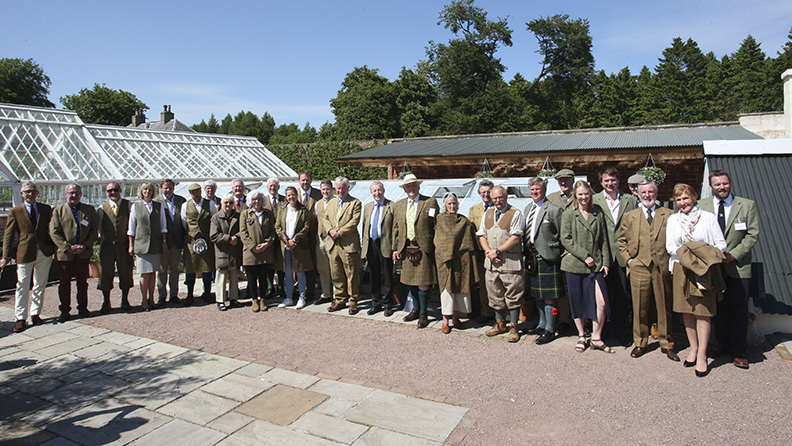
Johnstons of Elgin launch book on Scottish estate tweeds
Luxury Scottish cashmere manufacturer Johnstons of Elgin have launched the third edition of their book, Scottish Estate Tweeds.
Authored by Ian Urquhart, director and chairman of Johnstons, the 161-page book contains images of 217 tweeds, alongside a history of tweeds from the 1840s to the present day.
A glamorous launch event took place on 29 May at Gordon Castle, a Johnstons customer since 1844, with guests from estates around the country dressed in their estate tweeds.
Ian Urquhart comments, ‘The story of estate tweeds reflects the social history of Scotland. Estate tweeds are functional cloth used to identify a person as belonging to a place, an estate. It is worn by people working on the estate, ghillies and gamekeepers and the owner of the estate.
‘The design incorporates colours of the estate and so the wearer blends into the background colours. The tweed is waterproof, keeping the wearer cool in warm weather and warm in cold weather, wool tweed is an amazing cloth. Before synthetic materials it was successfully worn by people travelling to the Arctic and Antarctic.’

L-R: Neil Urquhart, HR and compliance director, Gordon & Macphail; Simon Cotton, managing director Johnstons of Elgin; David Evans, founder Grey Fox Blog; Nick Bannerman, commercial director Johnstons of Elgin.
In his Foreword HRH, The Prince Charles, Duke of Rothesay explains that he is proud to wear his estate tweed.
He writes that estate tweeds, ‘represent a continuing tradition of social and economic history most often associated with the Highlands’.
The fascinating stories of estates around Scotland, plus some examples from the Scottish Regiments and from England, are highlighted in the book.
The first edition of the book, then titled Scottish District Checks, was published in 1968 and written by Edward Stroud Harrison. His son Edward Paton Harrison updated the book in 1995.
After the Battle of Culloden in 1746, an Act of Prohibition was passed forbidding men and boys in Scotland from wearing tartan or Highland clothing and from carrying arms.
In the mid 1800s estate owners decided to have a special design of tweed to identify their estate staff. It is said that if there had been no tartans there would have been no estate tweeds.

Estate owners from around the country attended the book launch wearing their estate tweeds.
Johnstons of Elgin wove their first estate tweed, Glenfeshie, in 1846 and still weave tweeds to this day, while also being well-known for woven and knitted cashmere.
Established in 1797, Johnstons of Elgin is one of the last vertical mills in the UK still carrying out all the processes from raw cashmere and fine woollen fibres right through to the finished product.
Johnstons of Elgin’s mills in Elgin and Hawick employ over 1000 people, including highly skilled textile craftsmen and women.
Scottish Estate Tweeds is priced at £20 and is available in the Johnstons of Elgin store and online at www.johnstonsofelgin.com.
TAGS

